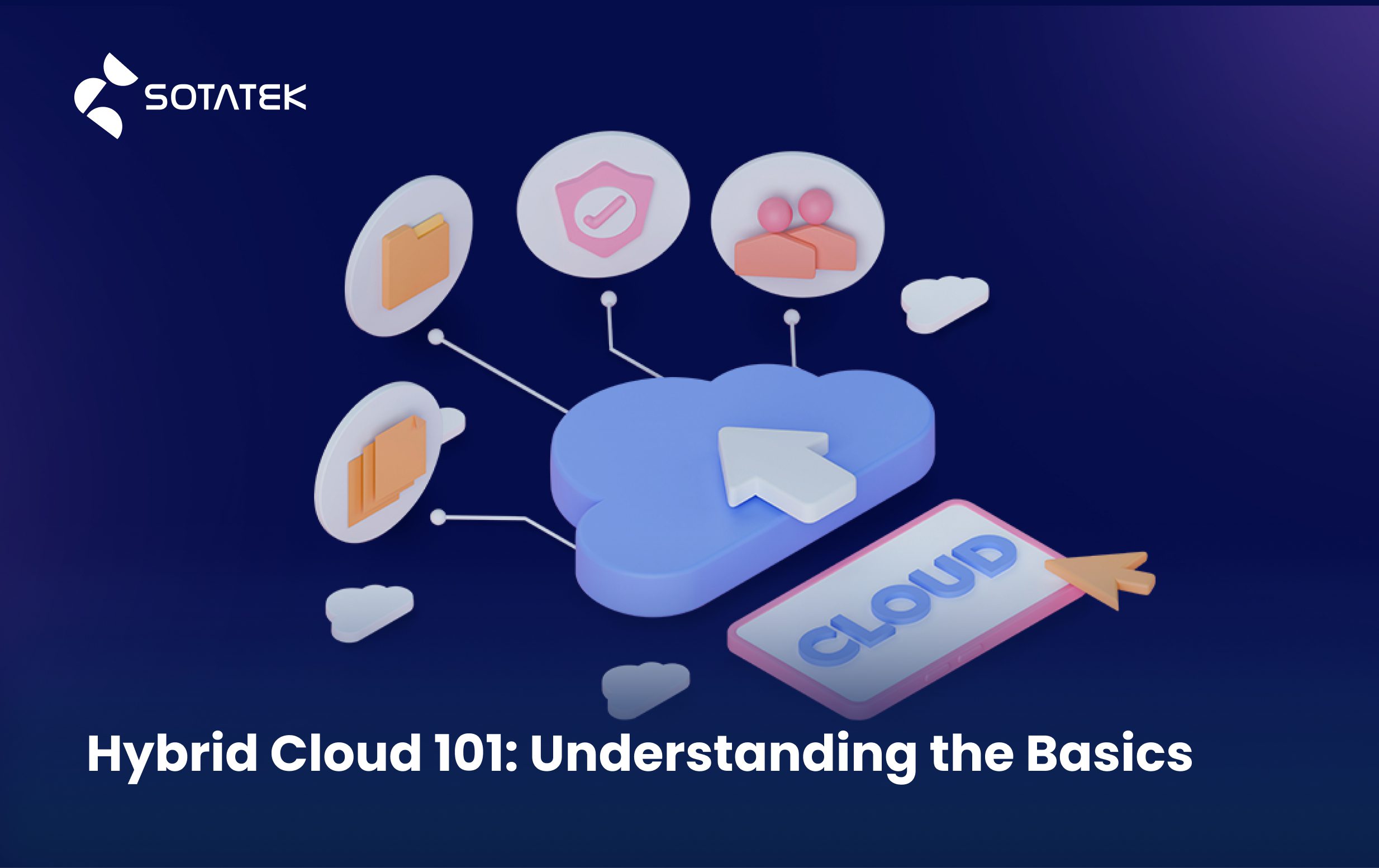Hybrid cloud computing has emerged as a transformative paradigm in the world of technology, redefining the way organizations manage and deploy their IT infrastructure. It has become an essential solution for businesses seeking to strike the perfect balance between on-premises and cloud-based resources.
In 2022, the Global Hybrid Cloud market witnessed remarkable growth, with a staggering market size valued at USD 107,125.77 million. This sector is predicted to hit 335,705.72 million by 2028. These statistics underscore the undeniable importance and rapid adoption of hybrid cloud solutions in today's ever-evolving digital landscape.
1. What is Hybrid Cloud
A hybrid cloud is a strategic approach to IT infrastructure that allows organizations to optimize their computing resources based on specific needs and requirements. This hybrid cloud architecture typically involves a combination of public cloud services, such as Amazon Web Services (AWS), Microsoft Azure, or Google Cloud, along with private cloud or on-premises data centers. By leveraging a hybrid cloud model, businesses can dynamically allocate workloads, applications, and data between these environments to achieve cost-efficiency, scalability, and performance optimization.
How does hybrid cloud work?
Imagine a multinational corporation with a substantial on-premises data center for hosting its mission-critical applications and sensitive customer data. At the same time, the company wants to leverage the scalability and cost-efficiency of public cloud resources for certain workloads, such as website hosting, development, and testing environments.

Hybrid Cloud can be a game-changer factor for businesses
In this scenario, the hybrid cloud architecture comes into play. The organization establishes a connection between its on-premises data center and a public cloud provider, like Amazon Web Services (AWS) or Microsoft Azure. This connection can be achieved through dedicated network links, virtual private networks (VPNs), or hybrid cloud management platforms.
2. Main Cloud Options
In today's IT landscape, organizations have four distinct cloud options to choose from:
- Public Cloud: Public cloud services are hosted and managed by third-party providers, offering on-demand resources like computing power and storage. They are accessible over the internet, providing scalability and cost-efficiency. Organizations can pay for what they use, making it an attractive option for startups and enterprises alike.
- Private Cloud: Private cloud infrastructure is exclusive to a single organization and can be hosted on-premises or by a third-party provider. It provides enhanced control, security, and customization, making it ideal for industries with strict regulatory requirements or businesses seeking greater privacy for their data and applications.
- Hybrid Cloud: Hybrid cloud combines elements of both public and private clouds, allowing organizations to leverage the benefits of both worlds. It enables seamless data and workload migration between on-premises infrastructure and public cloud services, offering flexibility, scalability, and control. Hybrid cloud is valuable for optimizing resource allocation and maintaining security.
- Multi-Cloud: Multi-cloud is a strategy that involves using multiple public cloud providers simultaneously to avoid vendor lock-in, increase redundancy, and optimize performance. Organizations can choose the best-fit services from various cloud providers to meet specific requirements, enhancing resilience and flexibility while managing costs effectively.

Each of these cloud options has its unique advantages and use cases, and the choice depends on an organization's specific needs
3. Benefits of Hybrid Cloud
a. Hybrid Cloud Security Control
With sensitive data and critical applications housed on private cloud or on-premises infrastructure, businesses can maintain a high level of control over their most valuable assets. This control extends to data access, encryption, and compliance measures, allowing organizations to implement tailored security policies and meet stringent regulatory requirements. By leveraging the public cloud only for non-sensitive workloads or specific tasks, companies can strike a balance between security and agility, mitigating the risks associated with public cloud exposure while reaping its benefits.
b. Cost Optimization
Organizations can save on infrastructure expenses by using public cloud resources. This flexible allocation of resources ensures that businesses pay only for what they use, reducing unnecessary expenditure and promoting cost-efficiency. Additionally, it allows organizations to scale up or down based on demand, preventing over-provisioning of hardware and infrastructure, further contributing to long-term cost savings.
c. Hybrid Management
With the right tools and platforms, organizations can gain a single, cohesive view and control over their hybrid cloud resources. This simplifies operations, making it easier to manage workloads, applications, and data across both public and private clouds.
d. Hybrid Storage
One of the key components of hybrid cloud is hybrid cloud storage, which entails storing data across a combination of on-premises and cloud-based storage solutions. This approach allows organizations to maintain critical or sensitive data on their private infrastructure while leveraging the cloud's vast storage capacity for less sensitive or easily scalable data. Hybrid cloud storage is an integral part of the hybrid cloud computing strategy, ensuring that data is accessible, secure, and efficiently managed across a diverse range of storage resources.
4. Final thoughts
In conclusion, hybrid cloud has emerged as a powerful and flexible solution for modern businesses seeking to balance the benefits of public and private cloud environments. With the ability to seamlessly integrate on-premises infrastructure with public cloud services



